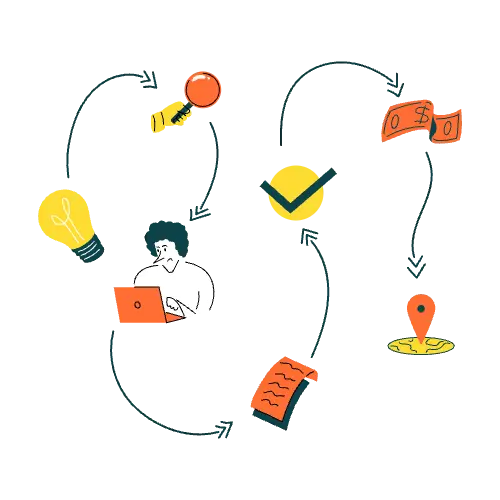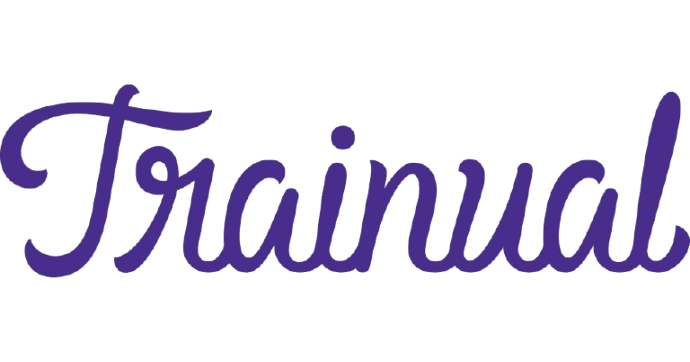Introduction
Growth breaks down when teams can’t ship. Endless discussions, unclear roles, and missed handoffs all kill momentum. You need systems that help you move, not slow you down.
Here I cover how to create operational habits that actually stick. That means better standups, tighter planning, clearer roles, and faster feedback loops.
This isn’t enterprise busywork. It’s the stuff that helps small B2B teams move like they’re 10x bigger. You’ll get practical ways to get more done with less stress.
Playbooks
Go to playbooksGrowth rhythm
Install a weekly rhythm that keeps you focused. Review data, resolve blocks and ship work every single week. Use a short agenda that turns issues into clear actions.
See playbook
Team collaboration
Help your team work better together. Set up shared rituals and tools to remove friction and move faster. Make async the default and know who decides and where work lives.
See playbook
Customer research
Talk to customers and turn insights into growth. Recruit, interview and synthesise without overthinking it. Capture findings in simple notes that feed decisions and content.
See playbook
Personal productivity
Take control of your week. Use habits and systems to focus on work that actually moves the needle. Add a quick daily review so important tasks get done without burnout.
See playbook
Collaboration stack
Tune email host, chat, calendars, project tool and SSO. Connect the stack, tidy notifications and access, and set simple rules that cut noise and keep teams aligned.
See playbook
Tools
Go to toolsBooks
Go to booksChecklist Manifesto
Atul Gawande
Why checklists work, where to use them, and examples for launches, experiments and migrations. Keep quality high and stress low.

Atomic Habits
James Clear
Turn habit theory into daily practice for marketers. Simple cues, tiny wins and scorecards that help teams deliver consistently under pressure.

The 4-Hour work week
Tim Ferriss
A pragmatic look at delegation, automation and lifestyle design. Keep the useful parts, skip the hype, ship more value.

Building a Second Brain
Tiago Forte
How to store research, briefs and ideas so you can reuse them later. A calm framework for notes that supports experiments and content.

The 80/20 Principle
Richard Koch
Use Pareto thinking to pick channels, ideas and customers. Cut the long tail and double down on what works.

Digital Minimalism
Cal Newport
How to reduce low value tools and feeds. Practical steps to tidy notifications, choose channels and free up time for impact.

Pyramid Principle
Barbara Minto
A method for clear writing and slides. Lead with the answer, group logic well and make recommendations easy to approve.

Getting Things Done
David Allen
Capture, clarify and review without friction. Keep projects moving with weekly reviews and clear next actions.

Essentialism
Greg McKweon
Rules for choosing fewer, better projects. Protect time, set trade offs and align efforts with clear goals and measures.

Deep Work
Cal Newport
A playbook for concentration in modern teams. Set focus blocks, reduce context switching and build a culture that values deep work.

Managing The Professional Service Firm
David H. Maister
A classic on leading expert teams. Balance sales, delivery and culture with numbers that keep the firm strong.

Rework
Jason Fried
Short essays that challenge default habits. Focus on product, talk to customers and cut pretend work.

The One Thing
Gary Keller
A method for ruthless focus. Ask the focusing question, block time and protect momentum on the work that matters most.

Slow productivity
Cal Newport
A humane approach to output. Plan seasons, protect focus and deliver work that matters at a sustainable pace.

Buy back your time
Dan Martell
A straight guide to reclaiming hours. Define your buyback rate, document tasks and build small systems that pay back every week.

Blog posts
Go to blogStay out of your inbox trap
Handle your email like a pro so it doesn’t constantly interrupt your day or hijack your focus.
Close your week with a Firebreak
Use a weekly firebreak to close open loops, reflect, and reset so you can start next week clear and focused.
Better meetings
Change your approach to meetings so they stop wasting time and start driving progress.
Protect your focus
Remove distractions and control your digital environment so you can do high-quality, focused work.
Manage your tasks with clarity
Create a trusted task system so you never forget anything and always know what to work on next.
Plan your week like a pro
Manage your time like your ad budget— get the highest ROI of your time with these tips
Wiki articles
Go to wikiBraindump
Clear your mind when you're overwhelmed with this exercise.
Deep Work
Focused, uninterrupted time for cognitively demanding tasks.
Eisenhower Matrix
Prioritise tasks effectively using the Eisenhower decision-making matrix.
Pareto Principle
Identify the vital 20 % and scale it for outsized growth.
Prioritisation
The process of ranking tasks or goals by importance and urgency.
Stakeholder Management
Align goals and secure buy-in with effective stakeholder strategies.
Further reading
Build a second brain and clear the mental clutter
The first step to regain control is a full brain dump. Empty every to-do, idea, and half-finished draft into a single inbox—paper, note app, or voice memo, it does not matter. Once nothing lurks in the back of your head, move each item into a PARA-style second brain: Projects, Areas, Resources, Archive. Projects house active campaigns; Areas store evergreen responsibilities like brand maintenance; Resources capture research snippets; Archive holds everything complete or obsolete. With every thought parked where it belongs you free working memory for problem-solving instead of remembering. Marketers I coach often reclaim an hour a day simply because they stop context-switching between forgotten tasks.
Set up a real project- and task-management hub
Spreadsheets and chat threads collapse once several channels run in parallel. Funnel every task into a dedicated project manager—Notion, ClickUp, Monday, whichever your team will actually open. Create a shared board for each growth objective and give every card three things: a clear outcome, an owner, and a due date. Tie sub-tasks to the same parent epic so designers, copywriters, and analysts see dependencies in one glance. When the board mirrors your second brain’s Projects list you always know what is on fire, what is blocked, and what can wait until tomorrow.
Leverage productivity and AI tools without the hype
AI will not fix broken processes, but it will shave minutes off routine work. Use language models to draft outline briefs, summarise call recordings, and generate first-pass subject lines. Pair them with focus tools—Pomodoro timers, calendar blockers, distraction blockers—to guard deep-work slots. The rule is simple: let software handle tasks that do not require judgement, then invest the saved time in strategic thinking, creative testing, or client conversations where human nuance matters.
Automate every repetitive hand-off
Copy-pasting leads from a webform into a CRM is a tax on growth. Map your common workflows—lead capture, campaign tagging, report distribution—and connect the dots with Zapier, Make, or native integrations. Start with low-risk automations such as Slack alerts on form submissions, then progress to bidirectional syncing between ads platforms and your analytics stack. Always build in error notifications; an automation you trust but never check can hide silent failures.
Run fewer, sharper meetings
Meetings should accelerate work, not delay it. Replace status updates with asynchronous loom videos or written check-ins. Reserve live calls for decision points that need real-time debate. Send an agenda 24 hours ahead, finish with action items in the chat, and book the next checkpoint only if open questions remain. Marketing teams adopting this rhythm regularly cut meeting time by forty per cent and report clearer ownership the very same week.
Keep knowledge searchable and evergreen
Growth produces artefacts—copy decks, SQL queries, campaign post-mortems—that compound value only when findable. Store all collateral in a shared drive or knowledge base with a strict naming convention: Date_Project_Asset. Tag each file to the same Areas and Resources you use in your second brain so retrieval takes seconds. Schedule a quarterly clean-up; stale docs breed confusion and multiply duplicate effort.
Set priorities and measurable goals
When everything is high priority, nothing ships. Adopt a simple scoring matrix—impact, confidence, ease—to rank ideas before they hit the backlog. Pair quarterly OKRs with weekly sprint goals so daily tasks ladder up to numbers that move revenue. Post the scoreboard where everyone can see it; transparency sharpens focus better than another motivational poster.
Scale systems as the team expands
A workflow that hums for three marketers can buckle at ten. Watch for rising hand-offs, access issues, and inconsistent file structures. Introduce role-based permissions, templated brief forms, and automated onboarding checklists as soon as you add new seats. Document why the system works, not just how, to preserve intent when fresh eyes join the project.
Maintain a continuous improvement loop
Tools and tactics age. Block time every quarter to audit your stack: which automations saved the most hours, which meetings remain valuable, where duplicate data crept back in. Use the findings to prune unused apps, streamline processes, and plan the next wave of experiments. Small, regular tweaks beat large, infrequent overhauls and keep the productivity flywheel turning.
Overcome overwhelm and stay ahead
Growth will always feel messy; the point is to impose just enough structure so creativity thrives instead of drowns. Implement the steps above in order—brain dump, board, AI assist, automation—and you will see bandwidth open up week by week. Share the wins with your team, refine the system, and enjoy running experiments without the creeping dread of missed tasks or forgotten follow-ups. Working smarter is not a one-time project; it is the operating system that lets every future tactic succeed.
Growth operations
You're ready for growth, but your tool stack isn't.
Growth feels chaotic. You're firefighting because of broken tools and messy data. You need a solid foundation to grow.
.avif)










